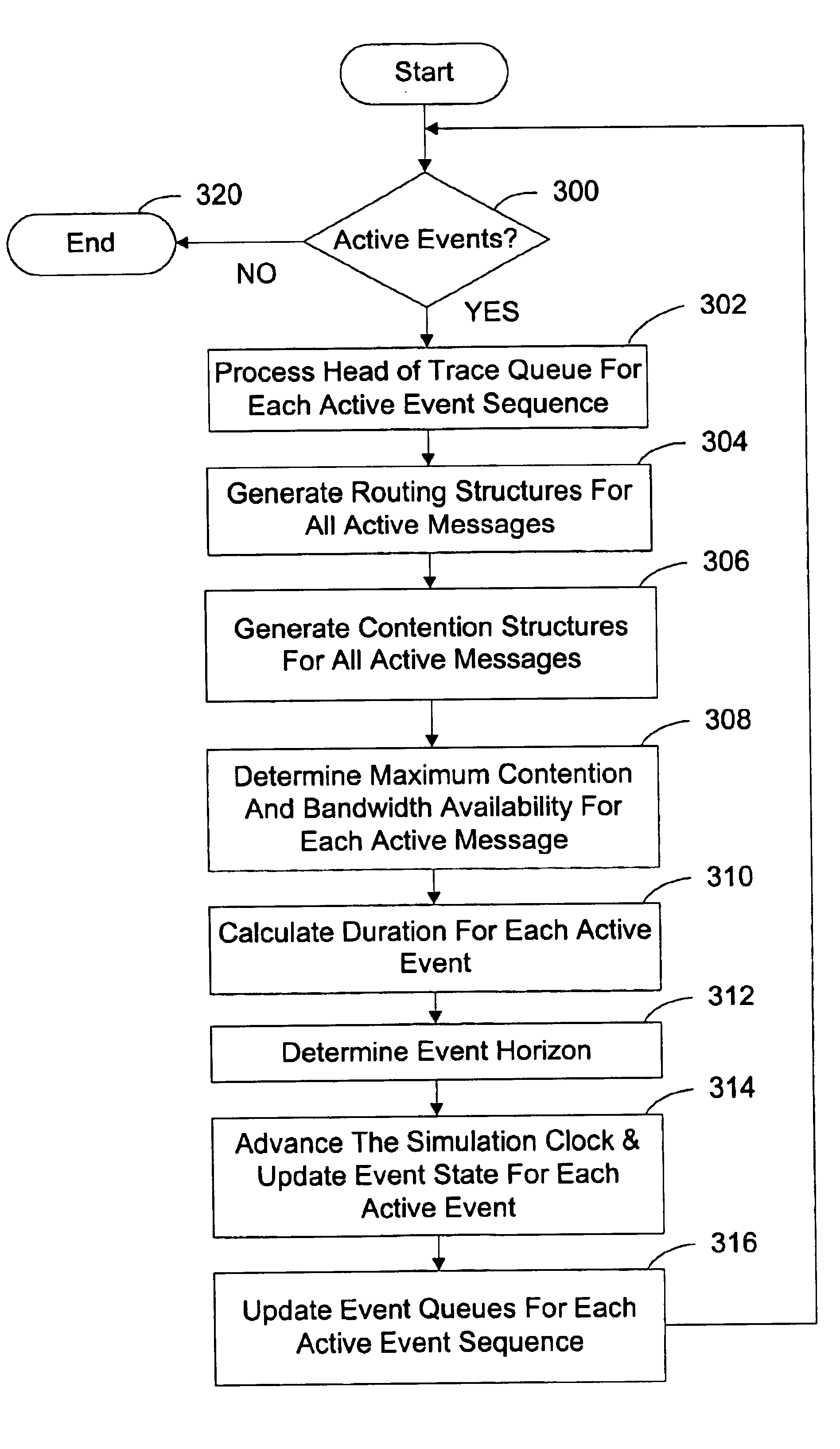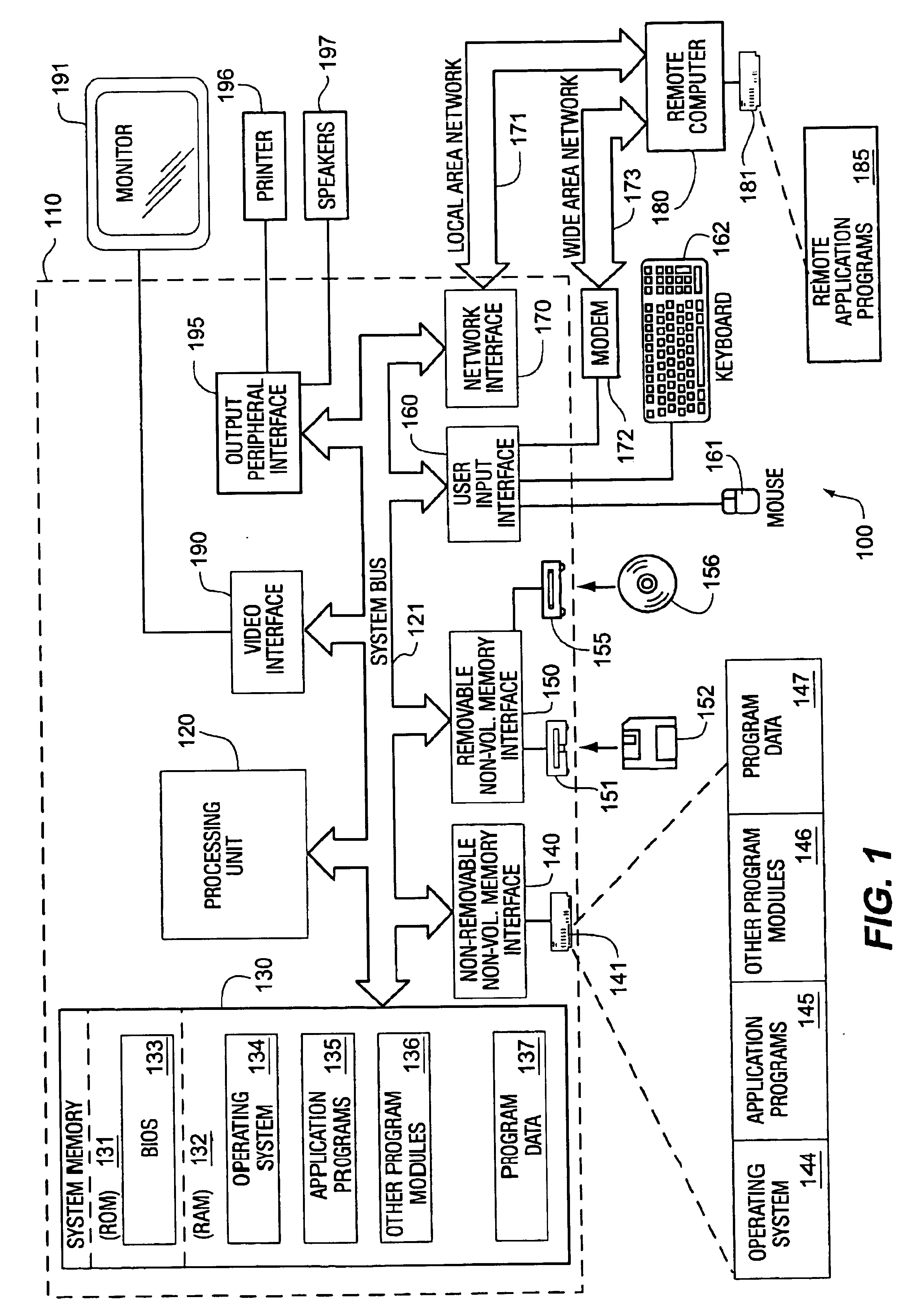Method and system for predicting communication delays of detailed application workloads
- Summary
- Abstract
- Description
- Claims
- Application Information
AI Technical Summary
Benefits of technology
Problems solved by technology
Method used
Image
Examples
Embodiment Construction
[0027]The delay model generation method and system represents, in a satisfactory level of detail, network characteristics to predict the performance effects of interest to a software engineer or system administration. The performance effects include link contention, message routing, bottleneck identification, and background loads. The delay model does not require a representation of the physical and protocol layers of a network.
[0028]The delay model is generated through the execution of a sequence of stages including: receiving a workload definition, generating routing structure (arrays), calculating contention structures (arrays) representing usage of network links / channels by simultaneously active message events, calculating bandwidth availability and resulting message data transmission rates, and rendering a communication cost for completing transmission of a message in view of current network transmission load conditions. Communication event and non-communication event cost valu...
PUM
 Login to View More
Login to View More Abstract
Description
Claims
Application Information
 Login to View More
Login to View More - Generate Ideas
- Intellectual Property
- Life Sciences
- Materials
- Tech Scout
- Unparalleled Data Quality
- Higher Quality Content
- 60% Fewer Hallucinations
Browse by: Latest US Patents, China's latest patents, Technical Efficacy Thesaurus, Application Domain, Technology Topic, Popular Technical Reports.
© 2025 PatSnap. All rights reserved.Legal|Privacy policy|Modern Slavery Act Transparency Statement|Sitemap|About US| Contact US: help@patsnap.com



